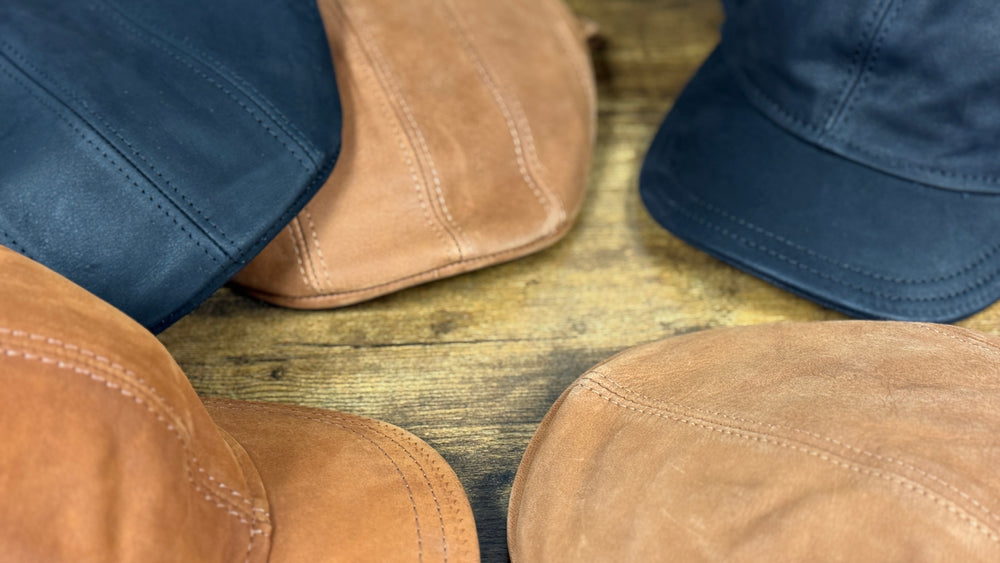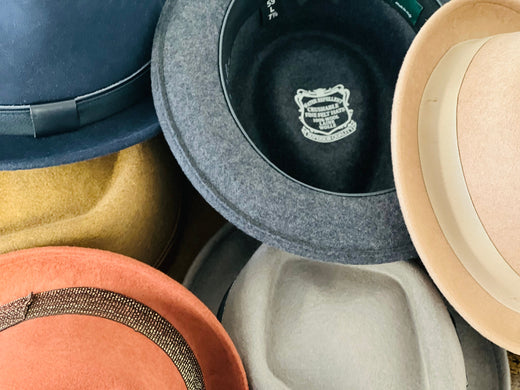Fedora vs. Trilby: What’s the Real Difference?
It’s easy to see why fedoras and trilby hats are often mistaken for one another. They share a similar silhouette, both feature pinched crowns, and are available in the same seasonal materials—like felt, straw, wool, and linen. But while the confusion is understandable, these two classic styles have distinct personalities, histories, and design details that set them apart.
Let’s start with their origins. Interestingly, both the fedora and trilby were initially worn by women and named after plays in which their female leads donned the iconic styles. The trilby debuted in a stage adaptation of Trilby, an 1894 novel by George du Maurier. The title character wore a short-brimmed hat with a sharply angled brim that soon became synonymous with her name. The fedora, meanwhile, got its name from the hat worn by Sarah Bernhardt in the 1882 play Fédora by Victorien Sardou. While both hats entered fashion through women’s wardrobes, it wasn’t long before they were adopted by men—especially in the 1920s when Edward, Prince of Wales, made the fedora a style staple.
Fast forward to today, and both styles are worn by men and women alike, but each serves a slightly different sartorial purpose. The main difference lies in the brim. A fedora typically has a brim wider than two inches, often between 2.5 to 3 inches (and sometimes more in modern interpretations). These brims are versatile—they can be worn turned up all around for a casual look or snapped down in the front for a more refined, sun-shielding silhouette. This adjustability makes the fedora a great choice for dressier or more formal occasions, while still being functional in rain or sun.
On the other hand, a trilby features a shorter brim, usually under two inches, and is generally angled downward in the front and upward in the back. While the trilby often looks like it has a snapped brim, it’s actually fixed in place and doesn’t offer the same styling flexibility as a fedora. That’s an important distinction: trilbys shouldn’t be manipulated or snapped, as doing so can warp the shape permanently. Consider the trilby your go-to for casual, everyday wear—stylish, yes, but more laid-back and modern in its flair.
Both styles are made from similar materials—felt for cooler seasons, and straw or lightweight weaves for spring and summer—but their tone and formality differ. Fedoras have a longer legacy as formal hats and continue to carry that association. Trilbys, with their sleek, compact brims, have become popular among fashion-forward dressers looking for something urban and understated.
In the end, whether you choose a fedora or a trilby comes down to your personal style and how you plan to wear it. Want something with a touch of old-school elegance and versatility? Go for a fedora. Prefer something sharp and contemporary that complements your everyday wardrobe? A trilby might be just the thing. Either way, it’s all in the details—and now you’re well equipped to spot the difference like a pro.
+++
As always, if you have any questions on styling or need help finding your perfect summer hat, we're always happy to help!
Feel free to reach out to our customer service at 888-999-HATS (4287) or by email at hats@hatsinthebelfry.com.
Want to come see us and shop in person? Come visit us at 103 Main Street in Downtown Annapolis!









